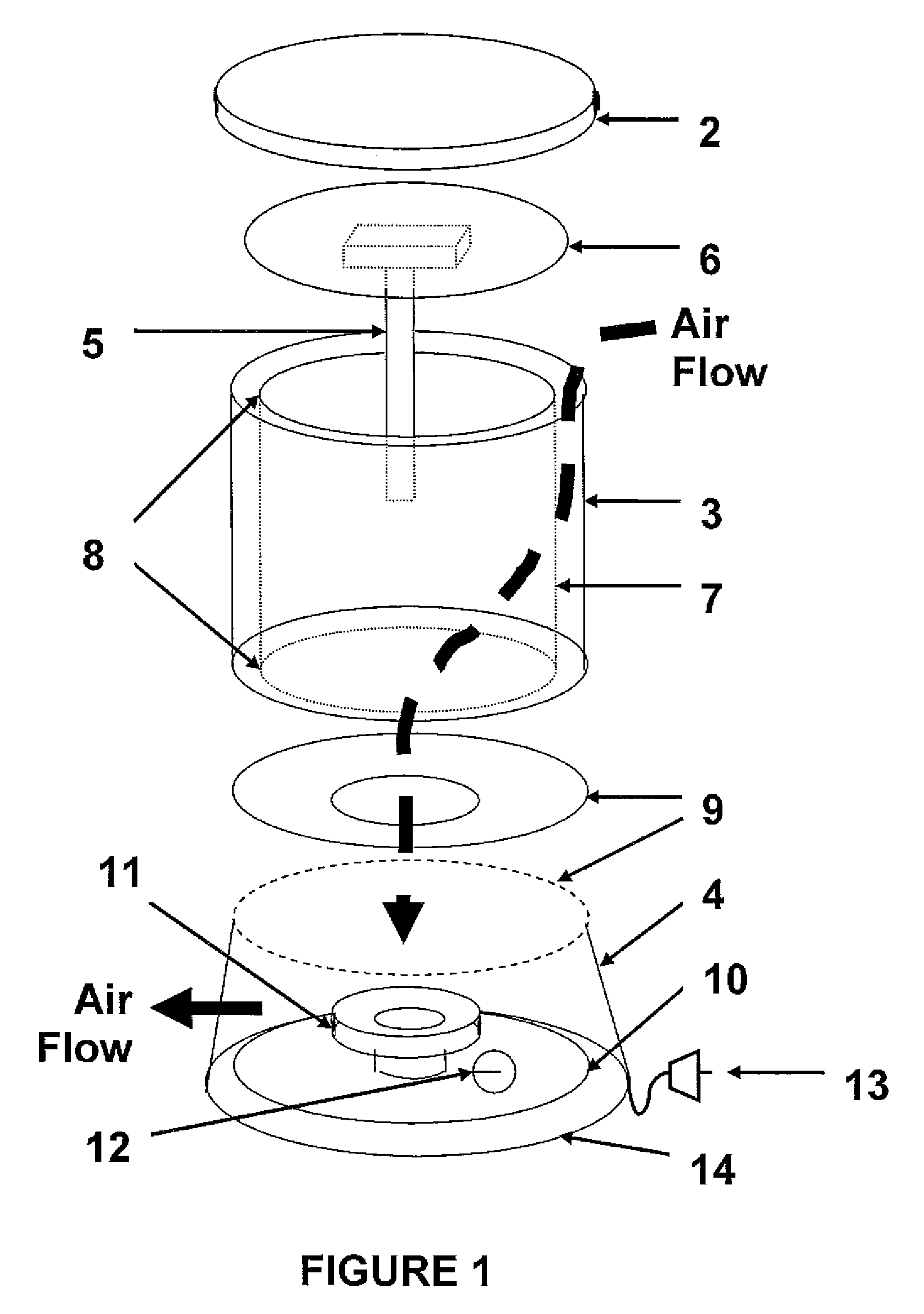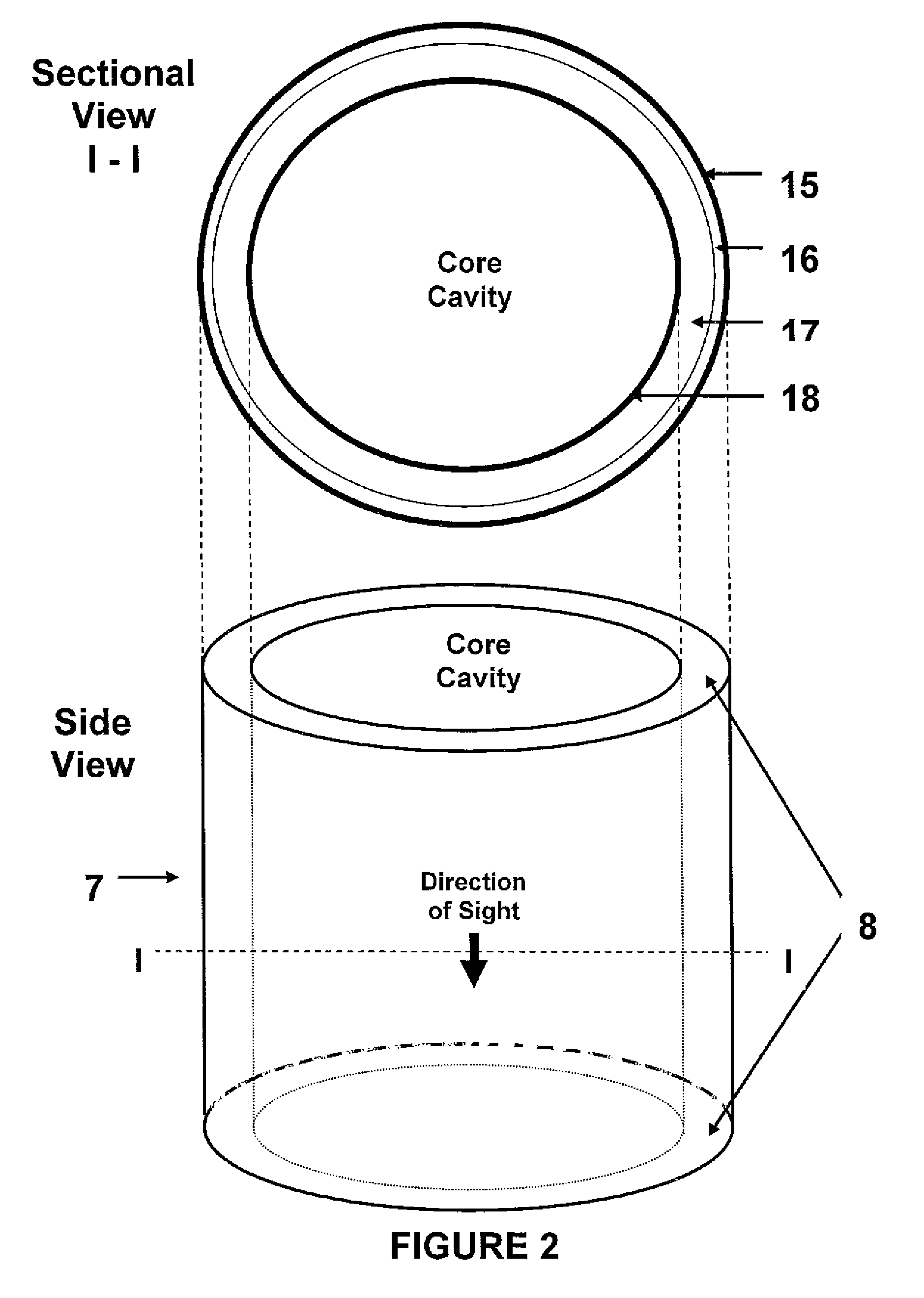System for purifying air through germicidal irradiation and method of manufacture
a technology of germicidal irradiation and purification system, which is applied in the field of system for purifying air through germicidal irradiation and method of manufacture, can solve the problems of reducing particle size, odor, and affecting the quality of air, and achieves enhanced air-surface contact and maximize photocatalytic surface conta
- Summary
- Abstract
- Description
- Claims
- Application Information
AI Technical Summary
Benefits of technology
Problems solved by technology
Method used
Image
Examples
Embodiment Construction
General Arrangement-Cylindrical Photocatalytic Element
[0087]FIG. 1 is an illustrative schematic diagram of one embodiment of an air purifier system and unit according to the present invention. The system 1 generally includes the housing (top 2, sides 3, and base 4 with air exit ports or louvers), a photocatalyst-activating light source 5 and light source mounting plate 6, photocatalytic cartridge 7 with elastomeric gasket rings 8, photocatalytic cartridge end-seal plate 9 (with central port), electrical component mounting plate 10, fan and motor 11, speed control / switch 12, power cord 13, and base plate 14. When assembled, the mounting plate 6 and cartridge end-seal plate 9 form air-tight seals with the elastomeric gasket rings 8, shown as part of the photocatalytic cartridge 7.
[0088]FIG. 2 is a schematic diagram of components making up a preferred embodiment of the photocatalytic cartridge of claim 1. All elements are sealed inside the end enclosures (elastomeric rings 8, in a pref...
PUM
| Property | Measurement | Unit |
|---|---|---|
| diameter | aaaaa | aaaaa |
| temperature | aaaaa | aaaaa |
| temperature | aaaaa | aaaaa |
Abstract
Description
Claims
Application Information
 Login to View More
Login to View More - R&D
- Intellectual Property
- Life Sciences
- Materials
- Tech Scout
- Unparalleled Data Quality
- Higher Quality Content
- 60% Fewer Hallucinations
Browse by: Latest US Patents, China's latest patents, Technical Efficacy Thesaurus, Application Domain, Technology Topic, Popular Technical Reports.
© 2025 PatSnap. All rights reserved.Legal|Privacy policy|Modern Slavery Act Transparency Statement|Sitemap|About US| Contact US: help@patsnap.com



